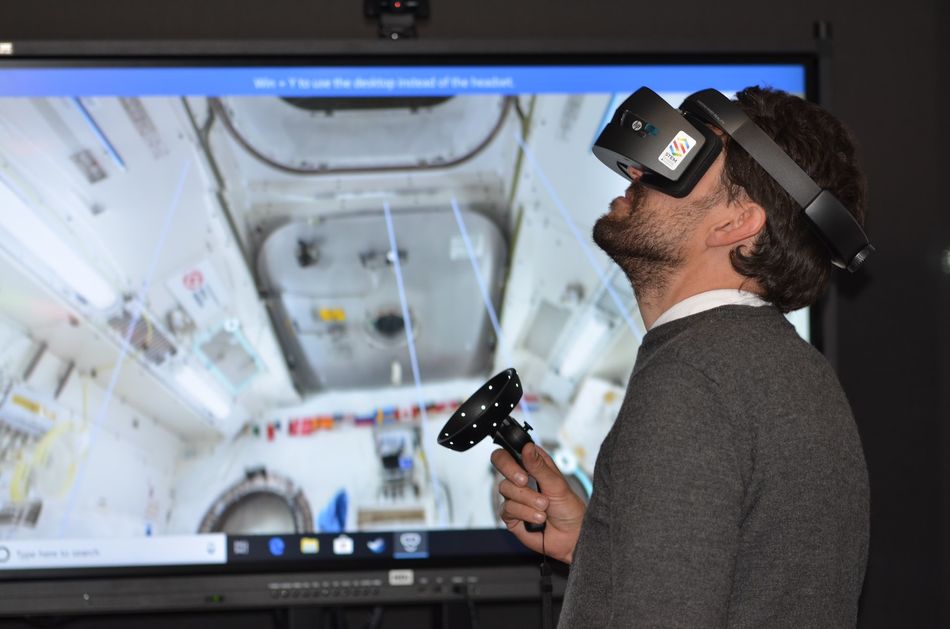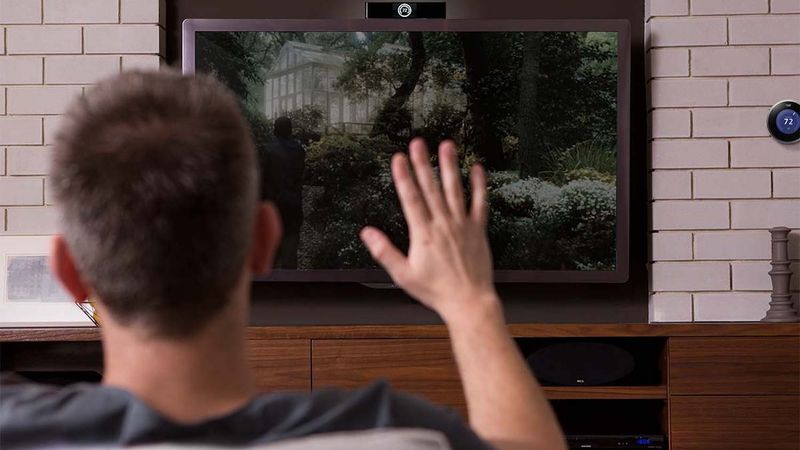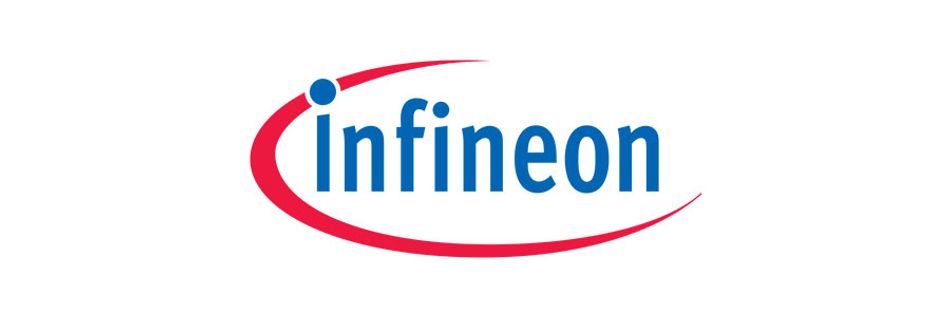Why Radar Sensors are Powerful Enablers for Intelligent IoT Applications
Article #1 of the Enabling IoT Series. "Intuitive sensing” applications enable humans to interact with smart devices in a more natural and seamless way.
This is the first article in a 6-part series exploring the technologies enabling the cutting-edge IoT.
More than twenty years after the introduction of the term “Internet of Things” (IoT), the world is gradually becoming connected by millions of sensors and devices. IoT devices are already used for better- and smarter living, saving costs and improving the quality of life.
The market demand for smart devices and their applications is experiencing dynamic growth as more and more consumers are looking to leverage the comfort, energy efficiency, and security benefits of smart technologies. According to Statista market research the global IoT market will be worth around 1.6 trillion US dollars by 2025.
One of the factors that propels this market growth is the emerging wave of “intuitive sensing” applications, which enable humans to interact with smart devices in a more natural and seamless way than ever before. The deployment of intuitive sensing relies on a range of non-intrusive sensing systems, which endow IoT applications with novel perceptive capabilities. Intuitive sensing systems enable IoT applications to “see”, “hear”, “smell”, “perceive” and understand the surrounding environment. In this way, they open new horizons for IoT technology in a variety of areas such as smart homes, security and industry.
Introducing Radar Sensors
In the scope of IoT systems and applications, a radar sensor is a device that is capable of sensing and potentially tracking one or more objects. In contrast to other Radio Frequency (RF) based passive/active wireless sensor systems, radar sensors are active, i.e., they can send out pulses and receive their echoes. Radar technology makes it possible to estimate the target’s speed, direction, and range (i.e., distance from the radar transmitter/receiver). Moreover, there are radar sensors that can detect small movements and even the presence of humans due to their high sensitivity towards the smallest motions.
Overall, the key advantages of highly sensitive radar technology for IoT applications include:
- Small size: Radar sensors have a small footprint in the size of the overall IoT system. Therefore, they enable the development of IoT systems of relatively small size. Their small size boosts their unobtrusive operation so as not to disturb or distract users.
- Robustness: Radar sensors work very well under different environmental or climate conditions. For instance, their operation is not essentially affected by variations in temperature or lighting conditions.
- Product Design Flexibility: One of the key features of radar sensors is that they can be concealed under product covers, which increases the design and deployment flexibility for IoT products. Specifically, radars emit RF signals at high frequencies (e.g., 24GHz), which can pass through most materials (e.g., plastic, glass, and wood). Hence, they can provide accurate readings for objects behind walls or obstacles.
- Sensitivity: Radar sensors can detect very small motions (e.g., breathing movements), which enables a host of interesting IoT use cases like sensing of human presence and of vital signs such as heartbeats.
- Power efficiency: Radar sensors consume relatively little power and therefore allow for great battery life. Hence, they enable IoT applications with considerable autonomy and energy efficiency.
Benefits of Radar Sensors for Motion Detection
Based on the above-listed properties, radar sensors can be used in many possible scenarios. However, their most common application is to detect movements and the presence (or absence) of targets such as people, vehicles, and animals.
Motion detection is an important capability for many IoT applications, including security monitoring, energy management, human-computer interaction (e.g., gesture recognition), and medical monitoring i.e., tracking of heart and respiration rate. The technology traditionally used for motion detection is passive infrared (PIR) sensors. Passive infrared motion sensors have been commonly used for detecting people moving around a space. They have been around for decades and have become ubiquitous i.e., they can be found in lighting fixtures, security systems, and automatic doors, among other places.
However, there are significant limitations associated with the deployment and use of PIR sensors, such as false alarms due to pets and other sources of infrared radiation in the environment, interference from other sources that operate on the same frequency range (e.g., TV remote control), limited sensing range and lack of directional information. Specifically, PIR sensors require a direct line of sight to detect motion, and their detection range is limited to the area directly in front of the sensor. Also, they usually require a significant movement in order to be triggered. For instance, it’s quite common for users to wave their hand in front of a PIR sensor in order to ensure that a smart home command is understood.
Radar technology alleviates the above-listed problems and limitations for motion detection. For example, radar sensors enable IoT applications to reliably tell the presence or absence of people in a room, independently of how fast and how much they are moving. Moreover, radar sensors are so precise that they can detect a human's breathing or heartbeat. This is not possible with PIR sensors that can only detect temperature changes caused by objects passing through their field of view.
60GHz Radar Technology
Radar sensors operate in different frequencies. A rich set of radar technologies operate at 24GHz with the bandwidth for FMCW (Frequency Modulated Continuous Wave) radar operations covering up to 250MHz within the regulated ISM (Industrial, Scientific, and Medical) band. This technology is extensively used in outdoor use cases, since it offers high detection range and is very robust to environmental influences (e.g., humidity).
While the 24GHz band is limited to the ISM band, there is a 7GHz unregulated bandwidth available around 60GHz. Hence, 60GHz radar technology has been developed to help create more powerful applications and products, notably applications requiring large bandwidth operations and close proximity sensing applications. Specifically, 60GHz radar technology can detect motions and complex gestures at a finer level of granularity and with better accuracy than 24GHz technology. This makes 60GHz technology an ideal choice for use in applications like occupancy sensing, human tracking, and segmentation, materials classification, as well as monitoring of human vital signs at a distance. Moreover, the micro-motion detection capabilities of 60GHz radar technologies make it appropriate for the emerging wave of Augmented Reality (AR) and Virtual Reality (VR) applications that will empower the Metaverse. This is the reason why 60GHz radar chipsets are already being integrated into HMDs (Head Mounted Displays) by various manufacturers.

Radar Technology in Smart Home Applications
Smart homes represent one of the fastest-growing segments of the IoT market. It is also the segment where radar technology acts as a catalyst for improving applications’ functionalities, accuracy, energy consumption, and cost. Specifically, the emerging availability of low-cost, low-power radar sensors enables a new generation of smart home applications ranging from enhanced security and safety through to improved convenience and comfort. Some of the most prominent examples of radar-enabled functionalities in smart homes include:
- Automatic Door Control: Radar sensors for intuitive sensing provide not only information on motion but also on approaching and departing movements. This can enable automatic door control applications, where doors open only if a target is continuously approaching, and not when other kinds of motion are detected.
- Presence/Absence Detection: When equipped with radar sensors, smart devices can sense the presence or movement of people, which enables a wide range of optimization applications. For instance, when no one is present, a radar-based smart device can automatically switch to sleep mode and save energy.
- Segmentation and Tracking: Radar sensors can add many smart functionalities to devices such as sound systems. For instance, sound systems could track the position of the listener and continuously optimize volume and sound parameters accordingly.
- Elderly Care Systems: Radar technology enables the development of innovative elderly care applications. For instance, they empower bed-exit systems that can be used to tell if a person has got out of bed and not returned within a few minutes. Similarly, radar sensors enable chair exit systems that determine whether a person has left their chair and not returned within a certain time.
- Heating Control Systems: Radars enable underfloor heating system control that determine whether someone is in the room, turning the heating on or off accordingly. In addition, they can track the distance and the position of a person in a room towards adjusting the fan speed as well as the direction of the blades of the room air conditioner unit. Such use cases improve the occupants’ comfort while boosting environment performance and sustainability.
- Fall Detection: Radar-based systems can be used for fall detection. In this case, the radar is typically mounted on a wall or ceiling and is continuously emitting modulated signals. When a person falls, their body rotates, causing shifts in the reflected waves. The radar system can then detect these shifts and record them as a fall event.
- Vital Signs Monitoring: Similar radar configurations can be also used to monitor breathing patterns and heart rates. Over time, this information can be used to detect deviations in the heartbeat pattern that could indicate cardiac arrhythmia or other problems. Heartbeat pattern detection enables a host of innovative lifesaving applications in the areas of infant care (e.g., identification of irregularities in heath rate) and elderly care.
Most of these functionalities can be captured based on body movement at a distance, even in poor lighting conditions. Moreover, they are delivered in a non-intrusive manner for the home’s occupants. The latter can move freely around the house without tripping false alarms from optical motion detectors mounted on walls or ceilings.

The Era of Intuitive Sensing
Latest advances in radar technology open new opportunities for pervasive and user-friendly IoT applications. These opportunities lead to the era of intuitive sensing, which is characterized by simple, effortless, and natural interactions with all kinds of smart devices. Intuitive sensing is a powerful enabler of non-obtrusive applications that make our lives easier, safer, greener, and more efficient.
Infineon is among the industry’s leaders in intuitive sensing solutions leveraging on its autonomous, small-sized, user-friendly radar solutions, which include both 24GHz and 60GHz solutions. The company’s XENSIV™ family of sensors includes a rich set of exceptionally precise radar sensors, which are the perfect fit for various customer applications in automotive, industrial, and consumer markets. In all these markets, XENSIV™ deployments deliver fast time-to-market and significant energy efficiency. As such they are a solid choice for improving deployers' bottom lines while helping them achieve ambitious sustainability targets.
Overall, recent advances in radar technology make it a powerful enabler of the next generation of accurate, user-friendly, and intuitive IoT applications that deliver great performance and handle environmental impact intelligently. In this context, IoT deployers and solution integrators cannot afford to ignore radar technology when designing and developing their applications.
Learn more about Infineon’s autonomous radar sensor for IoT applications in this on-demand radar webinar.
This is the first article in a 6-part series exploring the technologies enabling the cutting-edge IoT.
The second article provides a deep look at the role of Co2 sensors.
The third article looks at how Time of Flight (ToF) sensors are used for this purpose and are changing the way we can interact with VR, and other video technologies.
The forth article looks at how industrial enterprises are moving to a new approach to asset management, namely predictive maintenance by leveraging powerful new sensors and data.
The fifth article explains how MEMS microphones can deliver high-quality sound in an ultra-small form-factor.
About the sponsor: Infineon Technologies
Infineon Technologies AG is a world leader in semiconductor solutions that make life easier, safer and greener. Microelectronics from Infineon are the key to a better future. With around 50,280 employees worldwide, Infineon generated revenue of about €11.1 billion in the 2021 fiscal year (ending 30 September) and is one of the ten largest semiconductor companies worldwide. To learn more click here.


